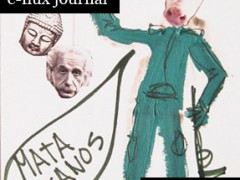Editorial – Cuba: The Fading of a Subcontinental Dream
e-flux journal issue 68 – December 2015
guest-edited by Coco Fusco
After a short prelude in last summer’s four-month Supercommunity issue for the 2015 Venice Biennale, e-flux is pleased to present Coco Fusco’s full special issue of e-flux journal focusing on Cuban artists and intellectuals’ intricate navigation of a myriad of experiments and obstacles in an era when the hopeful prospects of the late 1950s Cuban Revolution recedes deeper into history. In recent months, as many in the world applaud Raúl Castro and Barack Obama for normalizing relations between the two nations, the apparent reconciliation of Cuba’s ideological hermeticism with US hegemony is understood by many in Cuban cultural circles in more complex terms. For many Cuban artists and intellectuals who have seen their works censored and their peers repeatedly imprisoned, economic liberalization may prove to be merely a more sophisticated tool to supplement or enhance political stagnation under a different name. But the oncoming changes nevertheless bring an opportunity to revisit the conditions of cultural expression at a time when, if Cuba is joining the rest of the world, the rest of the world may also be joining Cuba, for better or worse. The issue is composed of recent essays translated from the Spanish, and we would like to thank Ezra Fitz and Ernesto Suarez for their splendid work.
with Ernesto Hernández Busto (The Forbidden Symbols), Danilo Maldonado Machado (Letter from Prison), Iván de la Nuez (Apotheosis Now), Juan Carlos Cremata Malberti (Condemn Us, It Does Not Matter: Art Will Absolve Us), Orlando Luis Pardo Lazo (Castrolence), Sandra Ceballos (Artist Against Artist), Enrique Colina Alvarez (On Censorship and Its Demons), Lázaro Saavedra (Tania Wins, Civil Rights Continue to Lose), Antonio José Ponte (The Putinization of Cuban Art), Amaury Pacheco del Monte (Alamar: An Oblique Approach).
see below for the articles
This post is also available in: Spanish

 Home
Home
